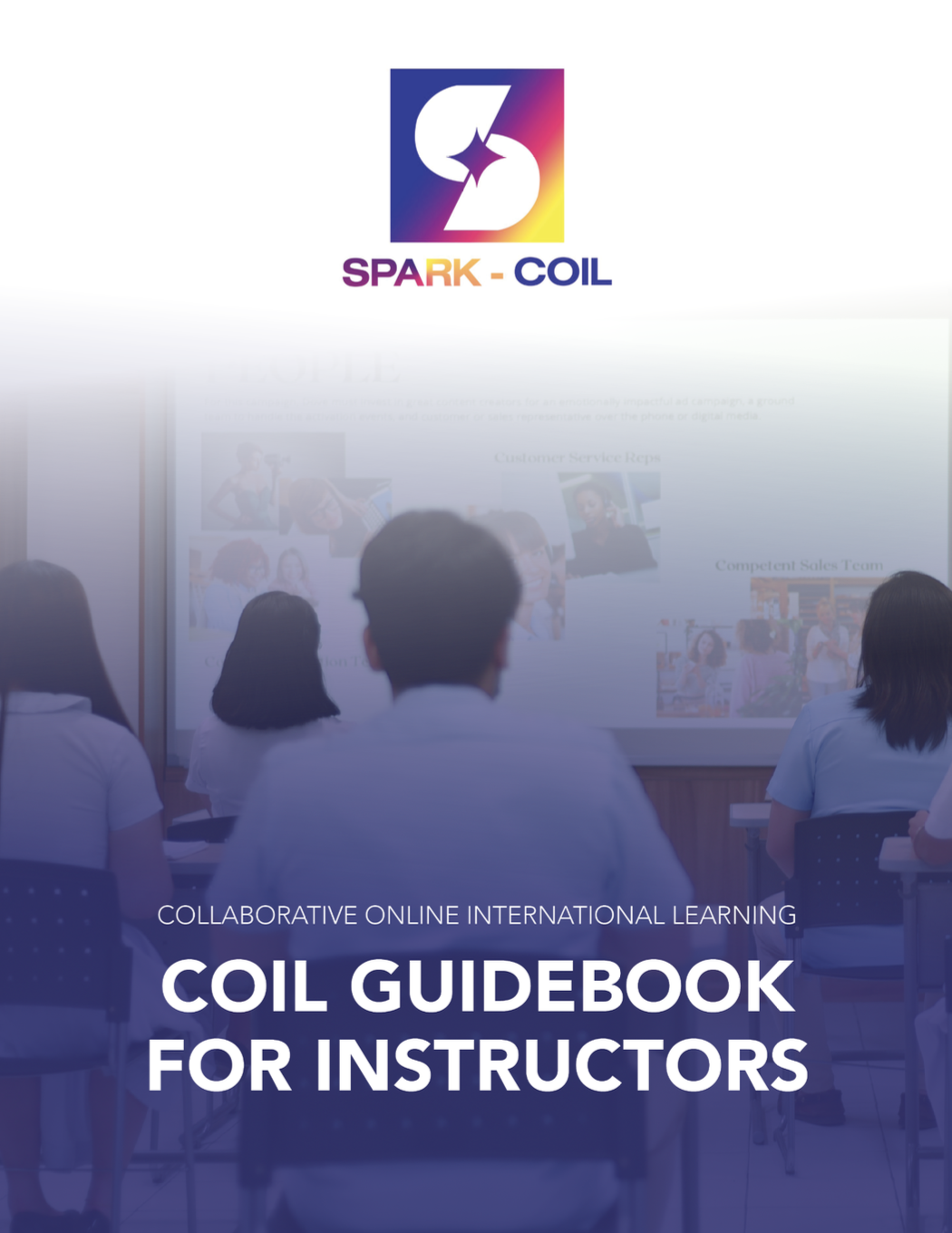SPARK-COIL ERASMUS+ PROJECT


The project, titled “Strengthen and Promote Academic Agility, Resilience, and Knowledge Exchange through Collaborative Online International Learning” (SPARK-COIL), aims to address implementation gaps in Collaborative Online International Learning (COIL) across Philippine Higher Education Institutions (HEIs). It focuses on building a centralized COIL program in collaboration with European partners.
The Philippines currently lags behind neighboring countries in COIL adoption due to limited training, lack of support staff, difficulty securing partners, and scarce funding. COIL is a virtual exchange that connects students from two universities through co-taught classes and joint projects, promoting global collaboration without physical mobility.
SPARK-COIL envisions a pilot initiative that empowers Philippine HEIs to launch and sustain COIL programs through training, support systems, and partnership facilitation.
This Erasmus+ initiative facilitates collaboration among five Jesuit universities in the Philippines—Ateneo de Davao University, Ateneo de Manila University, Ateneo de Naga University, Ateneo de Zamboanga University, and Xavier University-Ateneo de Cagayan—along with European partner institutions, the University of Alicante, Spain and WSB University, Poland.
What is COIL?
COIL is an approach to virtual exchange that interculturally and internationally links two classes from different institutions usually in higher education.
It is a learning modality that, at short-term, commonly unfolds across a 5- or 8-week period, within which a joint syllabus is co-designed and co-taught by a pair of partnered professors.
Classes can be fully online or can be conducted in blended formats wherein the individual classes have face-to-face sessions in their respective campuses while being linked for COIL through an online feed that is supported by blended learning technology.
COIL culminates into an output that is collaboratively developed by the students and is demonstrative of their acquired knowledge from the COIL learning experience. COIL also encourages asynchronous meetings among students to further collaborate on their output as well as extend the intercultural exchange beyond the COIL classroom.
COIL can merge two classes from different disciplines and academic fields, or remain single-disciplinary. Either way, the nature of the collaboration would depend on the shared goal of the paired COIL professors.
Only rarely are completely new courses created at either of the collaborating higher education institutions. This is because COIL virtual exchange generally banks on grassroots partnerships from international linkages generated directly by the faculty members.
Hence, COIL is typically embedded as a teaching modality within existing courses and is curricular in nature. The virtual exchange model, therefore, is revenue-neutral in that participating students are enrolled, charged tuition, and awarded grades only at their home institution. The same principle applies to faculty remuneration, ensuring neutrality in compensation processes across participating institutions.
History of COIL
The term COIL or Collaborative Online International Learning was coined by Jon Rubin in 2006 when the State University of New York (SUNY) System administration, in partnership with SUNY Purchase College, agreed to fund a new center devoted to this format of online exchange, which Rubin and his colleagues had been practicing since at least 2002.
Mr. Jon Rubin, also developed the COIL Connect website designed to be a site where institutions, both new to and experienced with COIL VE, could share data, connect, and develop collaborations. The site gathered important COIL data from the institutions that registered, which would show the authors if and how the pandemic was changing the field. The site was launched publicly in February 2021 and has provided a wealth of data that is shared throughout Rubin’s recently published book on COIL.
Rubin, J., & Guth, S. (Eds.). (2022). The Guide to COIL Virtual Exchange: Implementing, Growing, and Sustaining Collaborative Online International Learning. Routledge.
Guidebook for Instructors Downloadables
NEWS AND EVENTS
SPARK-COIL Kick-Off Equips Faculty Champions for Pilot Implementation
Faculty members across the Philippines and Europe embarked on the SPARK-COIL Kick-Off Orientation and Capacity Building for Champions, held on 1-2 September 2025 via Zoom video conference. Facilitated by Ateneo de Davao University, the Work Package 3 Lead, the two-day...
Jesuit Universities in the Philippines and European Partners Launch the SPARK-COIL
Jesuit universities in the Philippines, in partnership with the European Union through its Erasmus+ program, officially launched the SPARK-COIL Project (Strengthen and Promote Academic Agility, Resilience, and Knowledge Exchange through Collaborative Online...
IF YOU ARE INTERESTED TO APPLY OR PARTNER, YOU ARE WELCOME TO EMAIL OR SET A MEETING WITH US

